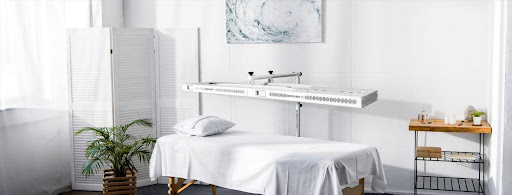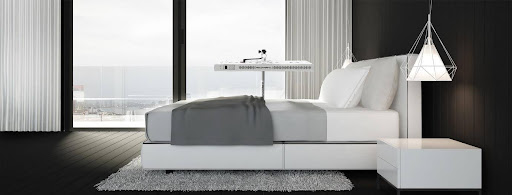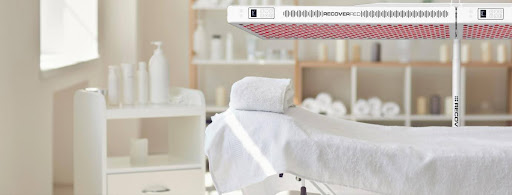Red light therapy (RLT), also known as low-level laser therapy (LLLT) or photobiomodulation, has become a popular wellness trend. The treatment involves exposing the skin or specific parts of the body to low levels of red-light wavelength.
Getting started with red light therapy lights involves a lot of factors that you have to consider. From the kind of products, you are using to the techniques you are implementing for the treatment; there are several factors at play.
To give you all the clarity about the product and its uses, we will highlight all the relevant insights about using red light therapy to improve your quality of life.
How does Red Light Therapy Work?
Before we even highlight the list of factors that influence the effectiveness of red-light therapy, we have to understand how it works.
The red-light photons from this therapy are absorbed by the cells, particularly by the mitochondria, which then create a cascade of cellular responses, helping reduce pain, discomfort, inflammation, and flare-ups.
Some of the cellular responses that red light therapy creates include:
- Increased ATP production
- Reduced inflammation
- Improved circulation
Overall, red light therapy has a mount of benefits that have a direct influence on improving one’s quality of life.
What are the Benefits of Red-Light Therapy?
Red light therapy has a variety of benefits on the body and has promising benefits in alleviating a lot of underlying complications, including:
What are the Benefits of Red-Light Therapy?
Red light therapy has a variety of benefits on the body and has promising benefits in alleviating a lot of underlying complications, including:
- Boosts skin health
- Promote wound healing
- Pain management
- Manage and prevent hair loss
- Regulate mood and sleep
These are just a handful of the benefits that you can avail of with red light therapy and how it influences your overall well-being in the long run.
What are the Different Pulse Frequency Settings?
When you are availing of red light therapy, one element that deserves to be highlighted is the pulse frequency settings. It is customizable and helps in fine-tuning every client’s treatment requirement. For the new users, the setting is usually at 0 and the range is from 0-30 Hz and is classified as low, medium, or high settings.
Depending on the client’s specific expectations from the treatment, the pulse frequency settings are adjusted. For example, the lower range of the pulse setting helps with reducing the pain and discomfort. The mid or higher range helps with more complex physiological functions like mood regulation and stress management.
Is Protective Eyewear Needed for Red Light Therapy?
When you go for laser cosmetic treatments, you know for a fact that wearing some kind of protective eyewear is a must. However, does the same apply to getting red light therapy as well?
Since red light therapy is usually emitted via LED lights, wearing protective eyewear is considered a good precautionary choice. However, what’s surprising is that some research indicates that exposure to red light has positive benefits in preventing retinal deterioration and is, in fact, good for the eyes.
However, when you are getting some form of red light therapy or using a product yourself, it is ideal to avoid staring directly into the red light to prevent adversities.
What are the Factors to Consider Before Starting Red Light Therapy for Your Health?
If you are considering getting started with red light therapy due to the benefits it brings, it makes sense that you have to keep certain factors in mind. This includes factors related to safety and compliance as well.
Here’s a breakdown of the same:
- Start by discussing the situation with a doctor
There are highs and lows when it comes to the use of red-light therapy, so it makes sense that you have to discuss your options with a doctor. During this period, you can highlight why you want to avail the treatment and what kind of expectations you have from it. Doing so will also give you a rundown of whether the treatment is right for you or not as well.
- Having realistic expectations
Red light therapy is a complementary treatment and not a standalone treatment. You have to continue your standard treatment and then use red light therapy on the side to augment the results of the treatment. So, if you have been undergoing any conventional treatments, RLT should never be used as an alternative option.
- Research about the specific device
Besides in-clinic red-light therapies, there are a variety of red-light treatment devices available in the market. So, if you are considering one for home use, we’d recommend that you cross-check the list of devices available in the market and then finalize the one that would best benefit your health complications. Always read through the reviews and testimonials before buying.
- Dosage matters
Too much of anything is bad for the health and that applies to the red-light therapy as well. Different conditions require specific treatment durations and frequencies. Follow the manufacturer’s instructions carefully and avoid exceeding recommended usage. So, if you aren’t being considerate about the duration of the treatment, it can lead to adverse effects.
Having a thorough discussion with your doctor before you start red light therapy is vital. It takes away from the complications and allows you to make the most out of the treatment. Also, take your time to inform yourself about the side effects to assess if it’s the right treatment option for you or not.
How to Start a Full Body RLT Routine?
The initial full-body red light therapy treatment usually involves starting with a quick 10–15-minute session with red light panels that are placed at a distance of 12-14”.
Once you get accustomed to the treatment and are sure that it won’t inflict any adverse impacts on the body, it is perfectly fine for you to switch things up and increase the intensity to 30 minutes, keeping the light panel 6-8” apart from the body.
When you are getting started with any kind of RLT routine, the key is to maintain consistency. You want to ensure that the treatment you are availing is targeted towards your specific needs and addressing the underlying health complications that you are dealing with.
Conclusion
If you are considering red light therapy for your health, we recommend keeping this guide into consideration. Red light therapy has emerged as an effective and non-invasive treatment for various health complications. So, if you wish to jump on the bandwagon and try your hands at it, we’d highly recommend you give this a go.




